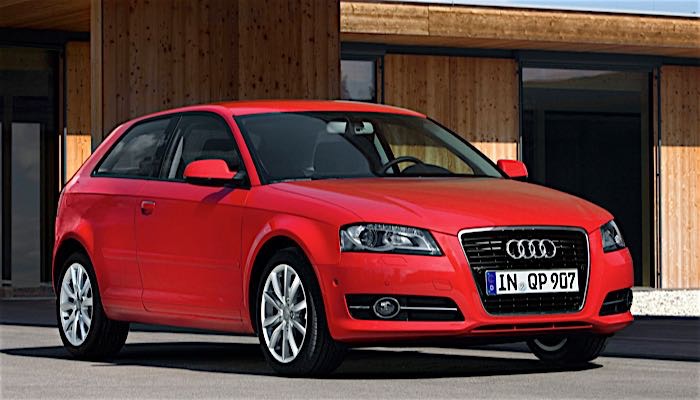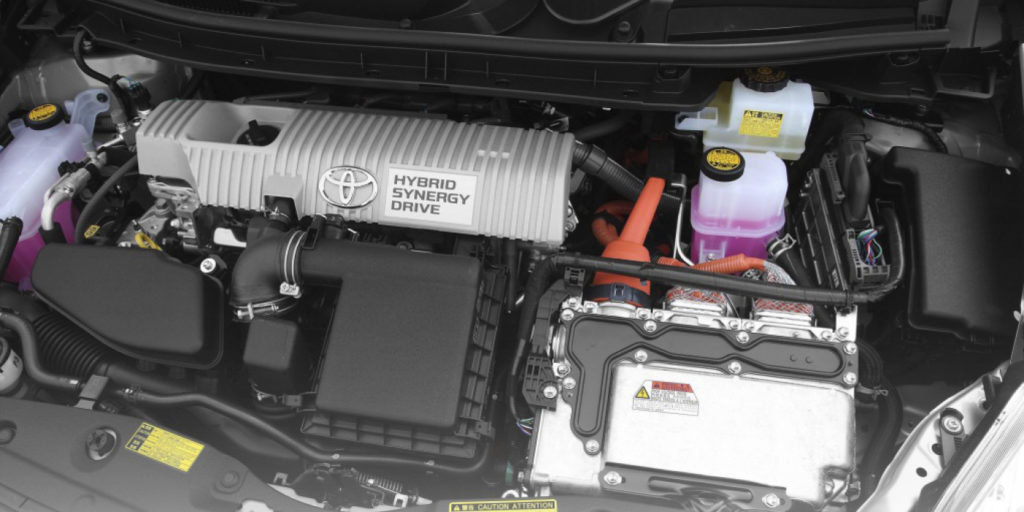Car counts are as vital to the financial health of the modern import shop as blood pressure is to personal health. For generations, many import shops have used the conventional “loss-leader,” 3,000-mile oil/filter change as their sole opportunity to inspect their customers’ vehicles for maintenance needs. But that practice has been rendered obsolete by import manufacturers programming extended oil life monitoring algorithms into their engine control modules (ECMs). These algorithms accurately predict engine oil life by monitoring data like average engine operating temperature, trip length, engine run times, engine load and vehicle speed. The end result is what we might call the “10,000-mile” oil change, which means that our oil/filter change car counts could be reduced by as much as 60%.
LOOKING AT THE MATH
Reduced car count numbers are not imaginary. According to one aftermarket data source, a 2011 Audi Quattro requires an oil/filter change at 5,000 miles for the initial oil/filter change and at 10,000-mile or 12-month intervals for subsequent oil/filter changes. A 2015 Hyundai Accent requires oil/filter changes every 7,500 miles or every 12 months. A 2014 Toyota Camry also requires oil/filter changes at 10,000 miles or in 12-month intervals. A 2013 Volkswagen Beetle similarly follows the recommended 10,000-mile, 12-month oil/filter change interval.
The common element in all four of the above scheduled maintenance recommendations is the 12-month oil change requirement. The bottom line is that if import owners ignore the 12-month requirement found inside their owner’s manuals, they might wait as long as two years for the ECM to activate the oil life monitor warning light or information panel display before seeking an oil/filter change. This not only means fewer opportunities to sell inspection, maintenance and repairs, but it can lead to expensive engine damage as well. To optimize our opportunities to sell inspection and maintenance, let’s compare four different import maintenance schedules obtained from an aftermarket database.
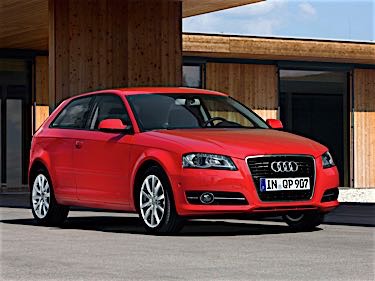
2011 AUDI QUATTRO
Because the Quattro is an all-wheel-drive vehicle, Audi recommends rotating the tires and resetting the tire pressure monitoring system (TPMS) every 5,000 miles. In summary, the Audi’s “Normal Use Maintenance” schedule includes resetting the service reminder; inspecting the exhaust system, the windshield and headlamp washer systems; checking the spare tire pressure and condition, brake friction and wiper blade condition; and replacing the HVAC dust and pollen filter at the first 15,000-mile, 24-month maintenance interval.
According to my interpretation of the owner’s manual, the dealer would see this vehicle at 5,000-mile intervals, either for a tire rotation or a tire rotation and an oil/filter change. At 24-month intervals, the Quattro is scheduled for a complete, bumper-to-bumper mechanical inspection and lubrication maintenance. Do we see any opportunities for packaging these services into more marketable inspection and maintenance intervals?
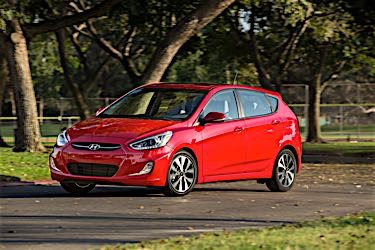
2015 HYUNDAI ACCENT
The Hyundai Accent’s “Normal Maintenance Schedule” is very basic, beginning with replacing the engine oil and filter every 7,500 miles or 12 months. A fuel additive is also scheduled at 7,500 or at 6-month intervals. At the initial 7,500-mile interval, the vacuum hoses, fuel filter and drive belts should be inspected. The tires must also be rotated and the air filter inspected after 7,500 miles. A fuel tank air filter must also be inspected if so equipped. At 15,000 miles, a general bumper-to-bumper mechanical inspection and tire rotation should be performed in addition to replacing the engine oil and filter. Even at that, we should expect to sell some wiper blades, cabin air filters, brake friction inspections and perhaps a set of tires during the first 37,500 miles of driving.
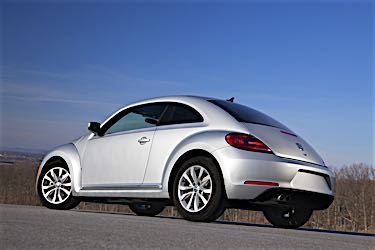
2013 VOLKSWAGEN BEETLE
Volkswagen’s initial 10,000-mile or 12-month oil/filter change includes inspecting the air filter, brake friction, and rear window cleaning nozzle functionality; resetting the service interval display; rotating the tires; and inspecting the windshield washer, wiper and visibility equipment. Highlights of the 20,000-mile oil/filter change include battery, brake friction/brake hydraulics and shock absorber inspections.
Beyond the routine services covered in the 30,000-mile or 36-month interval, Volkswagen recommends changing the clutch and brake fluid. At the 40,000-mile or 48-month interval, a complete bumper-to-bumper inspection that includes inspecting for body and chassis corrosion. In short, Volkswagen’s scheduled services and maintenance offer many opportunities to sell billable inspection and maintenance hours.
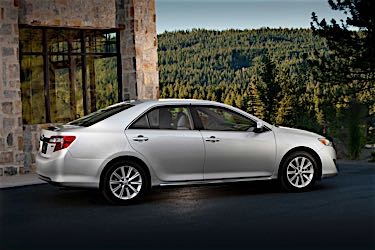
2014 TOYOTA CAMRY
While the Toyota Camry’s oil/filter replacements are scheduled at 10,000-mile or 12-month intervals, its inspection and maintenance schedule appears markedly different than the three nameplates mentioned earlier. Since Toyota has experienced a number of unintended acceleration complaints caused by its driver’s-side floor mats binding against the throttle pedal, Toyota requires an inspection of the driver’s floor mat every 5,000 miles to prevent future problems. There’s also a notation that the engine oil and filter must be replaced at 10,000-mile intervals “if 0W-20 engine oil was not used” at the last oil/filter change.
That notation begs the question on whether 0W-20 oil might be the only engine oil that will meet the longevity requirements of Toyota’s extended oil life monitor. Other than that, a major bumper-to-bumper inspection and maintenance package, including replacement of the cabin air filter, is scheduled at the 30,000-mile or 36-month interval. Here again, inspections and maintenance might be consolidated for customer convenience.
PACKAGING MAINTENANCE
It’s clear that much of the Original Equipment Manufacturer (OEM) maintenance scheduling is based upon two visits per year at 5,000-mile intervals. Although an average vehicle travels about 12,000 miles per year, that number might double according to geography and driving habits. In any case, a shop might begin by packaging the engine oil/filter change with a routine inspection of fluid levels, tire pressure/condition, wiper/visibility issues and exterior lighting. A second annual visit might add a more complete bumper-to-bumper inspection. Far from being “loss-leaders,” routine oil changes should become “profit leaders” when coupled with a well-thought-through inspection and maintenance plan.
LUBE BAY PROCEDURES
Getting out of the oil change business and into the inspection and maintenance business requires some fundamental changes in operating procedures.
Here are six places to begin increasing your bottom line:
1. Engines still use oil. If equipped with a dipstick, find out how much oil your customer’s engine is using by checking the dipstick oil level before removing the drain plug. If the engine isn’t equipped with a dipstick, capture the used oil in a container so the volume can be measured. In any case, your bottom line can be improved by offering free oil level checks or underhood inspections between oil changes.
2. “Dinosaur” oils are a thing of the past. Since the oil life monitor can extend the need for an oil/filter change well beyond the 12-month oil change interval, it’s doubly important to install an original equipment (OE) synthetic or synthetic-blend engine oil and filter, or an OE-approved aftermarket equivalent that will meet the requirements of extended service.
3. Batteries wear out. Thanks to the shorter cranking times of modern gasoline fuel injection, most engines will start even with a badly worn battery that might suddenly fail without warning. Battery testing should be performed during each scheduled inspection and maintenance.
4. Wheel bearings, tires and brakes wear out. When changing the oil and filter, I recommend using a drive-on hoist equipped with axle lifts that can raise the wheels a few inches so that sticking brake calipers, loose wheel bearings, worn steering linkages and damaged tires can be more easily detected. Don’t forget that most import vehicles require resetting the TPMS if the tires are rotated.
5. Exterior lighting burns out. A modern headlamp replacement or repair can often add up to a large repair order on a modern import. In other cases, severely weathered plastic headlamp lenses might also need to be replaced which adds to the repair bill. Routinely looking for small lighting issues like burned-out license plate or marker lights can save your customer the unwanted attention of traffic police.
6. Customers are unaware: Use your computer database to download safety recalls and technical service updates for every vehicle you service. In most cases, a printed document along with a short explanation of the issues involved goes a long way toward establishing credibility with your customer.

